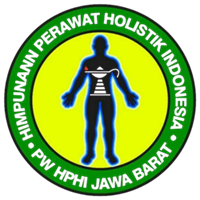Relationship Of Personal Hygiene by Nurses With Patient Satisfaction In Intensive Care Unit at Ciamis Hospital
DOI:
https://doi.org/10.52221/jvnus.v2i2.161Keywords:
Patient Satisfaction, Personal Hygiene, Intensive Care UnitAbstract
The impact of patients who do not receive personal hygiene is that patients are susceptible to skin diseases, infectious diseases, and gastrointestinal diseases and there is a possibility that patients are exposed to nosocomial infections. As a result, patients are not satisfied and have a bad view of the quality of hospital services. Fulfillment of patient personal hygiene by nurses can lead to patient satisfaction which has an impact on good stigma in services. Patient dissatisfaction with hospital services can be caused by not getting basic services such as personal hygiene by nurses and only be charged to the family. As a result, the stigma of hospital services will be bad. Quantitative analytical research method using a cross-sectional approach. The number of samples was as many as 20 people with a sampling technique using an accidental sampling technique taken from ICU patients at Ciamis Hospital. The results of the research on the relationship of personal hygiene by nurses with patient satisfaction in the ICU room at Ciamis Hospital, the results of the Correlations statistical test showed a significant value of p-value = 0.000. personal hygiene by nurses in the ICU RSUD Ciamis obtained the highest frequency, namely the good category as many as 19 respondents (95%), and the lowest frequency, namely the unfavorable category, with as many as 1 respondent (5%). ICU patient satisfaction at RSUD Ciamis obtained the highest frequency, namely the satisfied category of 19 respondents (95%), and the lowest frequency was the dissatisfied category of 1 respondent (5%). Conclusion Based on the results of the Correlations statistical test, it showed a significant value of p-value = 0.000. So it can be concluded that there is a relationship between the personal hygiene of nurses on patient satisfaction.
Downloads
References
Anggeria, Elis, and Emmi Maliza Hutagaol. 2017. “Hubungan Psikologis Dengan Personal Hygiene Pasien Kanker Payudara Di Rsud Dr. Pirngadi Medan Tahun 2016.” 2.
Astarani, Kili. 2016. “Gambaran Kondisi Fisik Dan Pemenuhan Personal Hygiene Pada Lansia.” : 146–51.
Firmansyah, A., Marliany, H., & Dayanti, S. (2020). The Relationship Of Nurse’s Caring Behavior With Level Of Patient Satisfaction In The Inpatient Room: Literature Review. JURNAL VNUS (Vocational Nursing Sciences), 2(1), 9-22. https://doi.org/10.52221/jvnus.v2i1.147
Fitriawati, Nurdiyah, Ahmad Juliadi, Ariady, and Didy. 2019. “Personal Hygiene Oleh Perawat Dan Kepuasan Pasien Di Ruang Rawat Inap Rumah Sakit Dr. R Soeharsono Banjarmasin.” 2-Trik: Tunas-Tunas Riset Kesehatan 9(4): 330–36.
Gaol, Imelda Verawaty Lumban, Mita, and Sukarni. 2019. “Hubungan Beban Kerja Perawat Dan Pelaksanaan Personal Hygiene Di Ruang Rawat Inap Bedah Pria/Wanita Dan Bedah Saraf Rsud Dokter Soedarso Pontianak.” Jurnal Ilmu Kesehatan dan Keperawatan Tanjungpura 1(1): 1–9.
Kasrin, Rinawati, and Rima Berlian Putri. 2015. “Hubungan Pelaksanaan Personal Hygiene Dengan Tingkat Kepuasan Pasien Imobilisasi Di Ruangan Neurologi RSUD Dr. Achmad Mochtar Bukittinggi Tahun 2015.” 6(1): 70–78.
Munawir, Ikbal. 2018. “Faktor-Faktor Yang Berhubungan Dengan Kepuasan Pasien Rawat Jalan Rumah Sakit.” Jurnal Ilmiah Kesehatan 17(3): 4–13.
Mustika, Tya Candra, and Nasrul Hadi Purwanto. 2015. “Pengaruh Tindakan Pelayanan Keperawatan Memandikan Dengan Kepuasan Pasien ImobilisasI.” Jurnal Keperawatan: 10– 18.
Nurhaeni, Heni et al. 2012. “Pengaruh Intervensi Personal Higiene Terhadap Kepuasan Pasien Immobilisasi.” 1: 161–70.
Permatasari, Dita, Siti, Rohimah, and Romlah. 2019. “Gambaran Kepuasan Keluarga Pasien Stroke Pada Pemenuhan Personal Hygiene Oleh Perawat Di Ruang Mawar Rumah Sakit Umum Daerah Kabupaten Ciamis Tahun 2018.”
Rahmadani, Rina. 2018. “Hubungan Peran Perawat Terhadap Tingkat Stres Pasien Fraktur Di Rsu Sundari Medan.” XI(1): 51–58.
Retnaningsih, Dwi, Dwi Nur Aini, Ita, and Yulianti. 2017. “Kepuasan Keluarga Pasien Di Ruang Icu Rumah Sakit Permata Medika Semarang.” jurnal kesehatan kusuma husada: 1–10.
Silalahi, Verarica, and Ronasari Mahaji Putri. 2017. “Personal Hygiene Pada Anak Sd Negeri Merjosari 3.” 2(2): 15–23.
Sulistyowati, Dina, and Fitria Handayani. 2012. “Peran Perawat Dalam Pelaksanaan Personal Hygiene Menurut Persepsi Pasien Imobilisasi Fisik.” 1: 169–74.
Supriadi, D., Purwanti, R., Rosmiati, Kusumawaty, J., & Firmansyah, A. (2019). The Effect of Elderly Exercise on Pain Scale in Patients with Rheumatoid Arthritis. JURNAL VNUS (Vocational Nursing Sciences), 1(1), 8-13. https://doi.org/10.52221/jvnus.v1i1.142
Suryati, Bagoes Widjanarko, VG, and Tinoek Istiarti. 2017. “Faktor-Faktor Yang Berhubungan Dengan Kepuasan Pasien BPJS Terhadap Pelayanan Rawat Jalan Di Rumah Sakit Panti Wilasa Citarum Semarang.” Jurnal Kesehatan Masyarakat (e-Journal) 5(5): 1102–12.
Susanti, and Indri Heri. 2014. “Hubungan Tindakan Mandiri Personal Hygiene Oleh Perawat Dengan Tingkat Kepuasan Pasien Imobilisasi Di Ruang Rawat Inap Rsud Dr. R Goetheng Taroenadibrata Purbalingga.” Keperawatan 07: 96–103.
Yusiana, Maria Anita, and Maria Silvianita Titis Saputri. 2016. “Perilaku Personal Hygiene Remaja Puteri Pada Saat Menstruasi.” Jurnal Stikes 9(1): 14–19.
Downloads
Published
How to Cite
Issue
Section
License
Copyright (c) 2020 JURNAL VNUS (Vocational Nursing Sciences)

This work is licensed under a Creative Commons Attribution 4.0 International License.
















